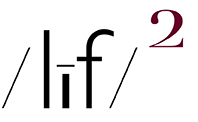people (faces) ~ (embiggenable)
places A (hand of man) ~ (embiggenable)
places B (nature) ~ (embiggenable)
things ~ (embiggenable)
I HAVE BEEN DEVOTING SOME TIME TO reading-1 or 2 essays (of 66) at a time (in no particular order) the new Bob Dylan book, The Philosophy of Modern Song. In addition to reading the book, I have also been listening to the 66 songs-on a ready-made Spotify playlist-that Dylan writes about in the book. FYI, each essay is a about a particular song and the artist who performs it.
iMo, reading the essays without listening to the songs is really a dumb idea. But, then again, there are those who think whole endeavor is a dumb idea. While I am greatly enjoying the essays / songs-highly recommended-it is most definitely a roller coaster, fun house, hall of mirrors ride through the mind of Bob Dylan. And, no, there is not the slightest hint of any idea, re: philosophy, in the book.
In any event, Dylan’s creation has got me to a-thinkin’. The result of which is that Mr. Dylan has inspired me to undertake a similar project - a book, The Philosophy of Modern Pictures.
The book will not be a comprehensive overview of the wide, wide world of photography-it will be illustrated with my pictures and only my pictures. Nor will it be an attempt to put forth an academic-style theory about the medium and its practitioners-it will be about how I practice the medium and its apparatus. And, even though I am capable of writing like this…
Looking and seeing and learning and knowing. Coupled compartments speeding and lurching on cold-heart steel rails and sensuous shifting sands, pursuing the horizon, an illusive vanishing point shrouded in earthly moonrise mist and fog. Tour guides, tourists, back seat drivers, and card carrying fellow travelers, all in their place in a place blurred by memories, perceptions, and time. Each being exactly what they are and imprecisely what others make of them, all waiting to be found, to be seen, and to be known.
…I am going to keep it simple. More like this…
I want my photographs to function like a pool table / pinball machine inasmuch as I have no desire to give a viewer’s eye a place to land and relax on the 2D surface of my prints. Rather, I want to direct a viewer’s eye to careen around the surface of my prints, ricocheting off the hard-defined edges of the image, all the while chasing / tracing lines, colors, and shapes. Think of it as dancing, if you will. albeit more like Hip Hop than a Waltz.
And, you can be absolutely certain it will not be gear / how-to oriented.
My first task is to go back through my blog(s) and cull out written snippets that will form the baseline for the book’s writings. I will be very surprised if I do not find more excerpts than I might need. Then, after some judicious wordsmithing, it’s on to picking pictures.
The question, re: pictures, is not only how many to include in the book but also how to present them….organized in recognizable genre / themes (people, places, things) / bodies of work or simply as a run-on sentence / stream of consciousness, aka: discursive promiscuity, kinda way? Gotta think about that.
All of the above written, my intent is to create a picture book that, by twists and turns, is both serious and irreverent but, by all means, a very first-person, aka: me, expression of how I see and use the medium and its apparatus.
cover idea ~ (embiggenable)
